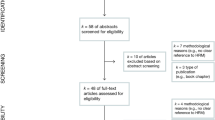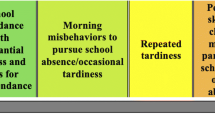Abstract
Models of organizational management are presented in the literature and in the managerial practices of recent years. They are aimed to improve organizational governance, and to enhance organizational overall efficiency. The common denominator for most, if not all these management models is that they generally focus on a single aspect, or on a very limited number of aspects of the organizational conduct whereas running an organization is a highly complex undertaking, incorporating a large number of functions and processes. School principals tend to adapt out-of-school management process, usually adapting them from the business world. And therefore we can see that the educational system at all and the school system in particular, implement business management methods. This research indicates that school principals are well aware of all the school management processes and procedures. The important contribution of this research, which is based on the unique contribution of the multi-faceted theory, is acknowledging the work of the school principals as a pyramid which its base is composed of essential consensus procedures and its three sided indicate three major school management process. We suggest that this pyramid will be called “The Pyramid Model of School Management”. The various management processes that built this pyramid are based on mutual aims and consensus of the school team to reach these aims. The consensus of the aims is essential, and with out it, the school cannot exist as an affective organization. Choosing when to take a various management action is a feedback based, and situation-based conduct. It is also shown in this research that school principals distinguish between three major management processes which we recommend that they will be called the “pyramid sides” and include: results management, human resources management and general resources management. The three groups are bounded by the “core of management” which we recommend that will be called the “pyramid base”. The pyramid base is connected to each and every phase of the life cycle of the organization, to each process and each result. It includes the school targets and aims which all the school team has to agree upon and there must be an un-doubtful consensus about them.
Similar content being viewed by others
References
Borg, I., Shye, S.: Facet Theory: Format and Content. Sage, Thousand Oaks (1995)
Fisher, Y., Friedman, I.A.: Pyramid Model of Organizational Management: Feedback-Based Management. Iyunim BeIrgun Ubeminhal Hachinuch. 27, 153–175 (2003) (in Hebrew)
Friedman, I.A.: School Management Training Curriculum: Principles, Issues and Processes. Ministry of Education, Administration for Teaching Staff Training and In-service Education, Jerusalem (2000) (in Hebrew)
Gutman, L.: A general nonmetric technique for finding the smallest coordinate space for a configuration of points. Psychmetrika 33, 469–506 (1968)
Keren, A.: Advanced Management: Selected Management Methods. Kinneret Publishing (2000) (in Hebrew)
Peterson, D.: School-Based Management and Student Performance. ERIC Digest No. 62. ERIC Clearinghouse on Educational Management, Eugene (1991)
Rees, F.: Facilitator Excellence, Handbook: Helping People Work Creatively and Productively Together. Jossey-Bass/Pfeiffer (1998)
Saint, S., Lawson, J.R.: Rules for Reaching Consensus: A Modern Approach for Decision Making. Pfeiffer & Company (1996)
Shye, S.: Faceted SSA. A Computer Program for the PC, vol. 7, pp. 401–426. Louis Gutman Israel Institute of Applied Behavior Science, Jerusalem (1991)
Ulrich, D., Zenger, J., Smallwood, N.: Result-Based Leadership. President and Fellows of Harvard College. Harvard Business School Press (1999)
Zachary, L.J.: Creating a Mentoring Culture: The Organization’s Guide. Jossey-Bass (2003)
Author information
Authors and Affiliations
Corresponding author
Rights and permissions
About this article
Cite this article
Fisher, Y., Friedman, I.A. The pyramid model of school management. Qual Quant 42, 645–664 (2008). https://doi.org/10.1007/s11135-007-9161-8
Published:
Issue Date:
DOI: https://doi.org/10.1007/s11135-007-9161-8




